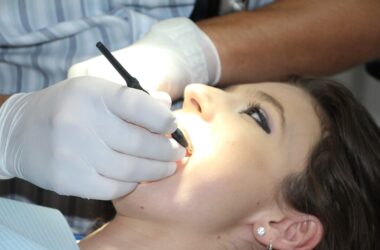In June 2023, my popular science book on women’s health issues, “The Palace of Life,” was officially published. This book is the latest revised version of “Affairs of the Womb.” Since its release, “Affairs of the Womb” has received widespread acclaim, winning the National Outstanding Popular Science Work Award from the Ministry of Science and Technology in 2016, and was selected as one of the Top Ten Health Books of 2016 by “Healthy China.” With sales exceeding 100,000 copies, it has been highly regarded by experts and has become a symbol of the new era of popular science works. However, when spread online, terms related to female reproductive health such as “uterus” and “ovaries” tend to be blocked by Internet filtering mechanisms. To address this issue, “Affairs of the Womb” was renamed “The Palace of Life.”
As a male obstetrician and gynecologist, I am often asked why I chose this profession. In informal settings, I tend to respond humorously, attributing it to organizational arrangements. But in formal settings, my answer is more profound: it was my mother’s passing that drove me to pursue a career in medicine. My mother died of a gynecological tumor, and I chose to become an obstetrician and gynecologist. Regrettably, it was not until 30 years later, in 2012, during my studies abroad, that I understood the possible answer—my mother might have had endometrial cancer. If detected early, this disease could have been treated with excellent outcomes. In the past, my family and I lacked the necessary medical knowledge and missed the chance for treatment.
Encouraged by senior colleagues at home, I resolved to embark on a journey of popular science writing and dissemination. I published many popular articles on women’s health on social media platforms, presented interviews and articles on major television networks, newspapers, and magazines, and co-edited the book “Conversations on Gynecological Tumors with Prominent PUMC Physicians” with experienced colleagues. Despite receiving favorable responses, I personally felt that the style of the book still leaned towards traditional. I noticed that my humorous and witty online popular science articles were frequently reproduced, which inspired me to create a popular science book aimed at healthy female readers rather than professional patients.
I once tried to adopt a storytelling format to convey my medical experience and humanistic concern. However, when compiling a medical popular science book, this posed a risk of exposing patient privacy. If I used real cases from Peking Union Medical College Hospital for description, the veracity of the plots and characters could cause public misunderstanding or confusion. And while I noted that medical articles written in fashionable language online were very engaging and garnered high click rates, I also realized that male doctors need to be cautious when writing about women’s issues. Overly liberal or trendy language could easily lead to misunderstandings. This made me consider a retro approach to writing.
I was born in a Tujia ethnic village in eastern Chongqing, where some villagers could sing and dance, and others were adept at creating catchy rhymes. When I was herding cattle as a child, my mother taught me to recite the “Three Character Classic.” These experiences made me more inclined to use traditional narrative methods to express my ideas.
I was once fascinated by classical serialized novels depicting historical events, such as the impassioned “Romance of the Three Kingdoms,” the delicate “Dream of the Red Chamber,” and the martial arts-infused works of Jin Yong. Their clear episodic structures always allowed for engrossing reads. Inspired by this, I nurtured the idea of creating a serialized novel format for a women’s health popular science work.
Considering the point of entry for the content, my attention was naturally drawn to the cradle of female life—the uterus. It concerns not just pregnancy and childbirth, but is closely connected to overall reproductive health. To this end, I thoroughly organized knowledge in gynecology and obstetrics and, with over twenty years of clinical experience in the field, I proceeded to create following medical logic. During the revision phase of the manuscript, I carefully reviewed materials, verifying each medical datum. Before the work was printed, I even specifically invited colleagues from my department for an academic review.
After much deliberation, I decided to name the work “The Affairs of the Uterus”. Here, “affairs” refers to various pathological “situations” related to the uterus, the deep “kinship” between mother and child, and the enduring “love” between men and women. As an organ unique to women, the uterus is undoubtedly the best carrier for these “affairs”.
The book is divided into two volumes, presenting a structure of one hundred and twelve episodic chapters. Each chapter is summarized by a seven-character “poem” at its title. It begins with a short text of about one hundred words as an introduction, followed by a storytelling-style description of the organ and common diseases. Sometimes the narrative mode of war is used to show the defense against diseases, sometimes popular internet slang is utilized, and sometimes vivid metaphors make the scientific reading material approachable yet logical and rational. Although the text is accessible, it strives to convey precise medical information.
After consulting with related experts, I revised the original work to become “The Palace of Life Talked”. At the end of each chapter, I added a rhymed seven-character ancient poem, reflecting a form found in the folk literature of Tujia nationality in my hometown of Eastern Chongqing—exclaiming rhymed improvisational poetry. Also, based on suggestions, I changed the seven-character “poem” at the beginning of each chapter to a concise four-character phrase, making it more catchy and easier to remember.
The compilation of “The Palace of Life Talked” aims to guide women to start caring for themselves in times of good health, to understand and master health knowledge in order to have and extend a healthy life, and to radiate the beauty of women. In the current severe demographic situation of our country, it is particularly urgent to protect the uterus, an important organ for human reproduction.
I hope that this work can play a role in maintaining a healthy China, especially in achieving the goals of the “Healthy China 2030 Planning Outline”—popularizing health knowledge and improving the public’s health literacy—contributing a force along the way.
In the many specialized actions to promote the popularization of health knowledge, the popularization of health knowledge has been given priority. When exploring the specificity of health science communication, one can start with the uniqueness of its content. Objects of natural science exploration, such as deep space, the deep sea, geology, and paleontology, are either spatially unattainable for us, like the Milky Way and distant galaxies; or temporally far from our modern era, such as the Jurassic period; or far removed from us on the phylogenetic spectrum, such as dinosaurs and many other organisms. When popularizing these areas, we usually do not have to worry about touching the personal feelings of the audience; our main concern is to ensure the accuracy of the information.
However, the diseases and physiological phenomena covered by health science popularization are closely related to everyone. Therefore, during the process of popularizing science through stories and cases, it is necessary to carefully handle patient privacy issues to avoid inflicting secondary harm on them. My personal experience is to anonymize information such as the patient’s age, place of residence, and time of seeking medical care, and to publish the information after patient review and consent, ensuring that their daily life and work are not affected.
The margin for error in health science popularization is extremely limited, and it must accommodate different viewpoints. Compared to other fields, the popularization of health-related content demands more stringent standards because it pertains to people’s health and life safety. Moreover, medical knowledge is often obscure and difficult to understand. Healthy individuals may not be interested in it, while professionals may find it hard to accept due to the many flaws they might identify.
In addition, the target audience for health science popularization is quite limited. General science popularization activities mainly target young people, but they are often not the main audience for health science popularization. On one hand, young people are generally in good health and lack the desire to acquire health knowledge. On the other hand, compared to the attraction of games and short videos, health science popularization seems rather dull. Health science content in schools, such as visual health, spinal health, and adolescent health, usually needs to be “instilled” like a task, and students often lack initiative. For those working in health science popularization, this requires them to continuously improve their creative skills and innovate in communication methods to spark young people’s interest.
Science popularization focusing on women’s health also has its uniqueness. In a narrow sense, women’s health usually refers to female reproductive health, which is often considered a sensitive topic and not suitable for open discussion. Even authoritative media might approach such topics with caution. Women’s health is directly related to family happiness, human reproduction, and social progress. Against the backdrop of increasingly severe aging issues in our country and a continuous decline in the birth rate, ensuring the health of women and their reproductive systems is particularly important.







